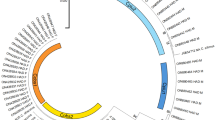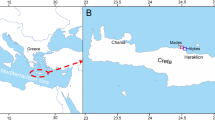Abstract
THE communication of Dr. Joseph Drew in your issue of yesterday regarding the serpentine appearance of a flock of shags in the English Channel is extremely interesting even as a mere fact regarding the habits of these birds. Will you kindly permit me, however, to point out that Dr. Drew's statement cannot be regarded as explanatory of the sea-serpent's personality? At the most the incident only explains one of a number of serpentine appearances of which porpoises and sun-fishes swimming in line, pieces of wood with trains of sea-weed, &c., are also good examples. There have been placed on record numerous incidents of serpentine forms having been closely inspected (as in the well-known case of the Dædalus, or later still of H.M.S. Osborne) where the hypothesis of the serpentine appearances assumed by flocks of birds or fishes could not be held as explanatory in any sense. It is with the view of showing that the exact personality of the “sea-serpent” cannot be accounted for by such an incident as Dr. Drew relates, that I venture to pen these remarks; and as a firm believer from the standpoint of zoology that the large development of the marine ophidians of warm seas offers the true explanation of the “sea-serpent” mystery, I would also ask your readers to distinguish carefully between cases in which serpentine appearances have been assumed by ordinary animals, and those in which one animal form has presented itself in the guise of the “great unknown”. I am far from contending that a sea-snake developed in the ratio of a giant “cuttle-fish”, presents the only solution of this interesting problem. A long tape-fish, or even a basking shark of huge dimensions, might do duty in the eyes of non-zoological observers for a “sea-serpent”. The following cutting from the Scotsman of September 6, indeed, seems explicable only on the tape-fish theory which I have advocated with the persistence of firm belief within the past few years. At the same time zoologists cannot but feel indebted to Dr. Drew, and to those who, like that gentleman, note unwonted appear ances in ordinary animal life, and communicate such incidents to your columns.
This is a preview of subscription content, access via your institution
Access options
Subscribe to this journal
Receive 51 print issues and online access
$199.00 per year
only $3.90 per issue
Buy this article
- Purchase on SpringerLink
- Instant access to full article PDF
Prices may be subject to local taxes which are calculated during checkout
Similar content being viewed by others
Author information
Authors and Affiliations
Rights and permissions
About this article
Cite this article
WILSON, A. The Sea-Serpent Explained. Nature 18, 519 (1878). https://doi.org/10.1038/018519c0
Issue date:
DOI: https://doi.org/10.1038/018519c0
This article is cited by
-
Dichogamy in angiosperms
The Botanical Review (1993)
-
Why do nectar-foraging bees and wasps work upwards on inflorescences?
Oecologia (1981)



